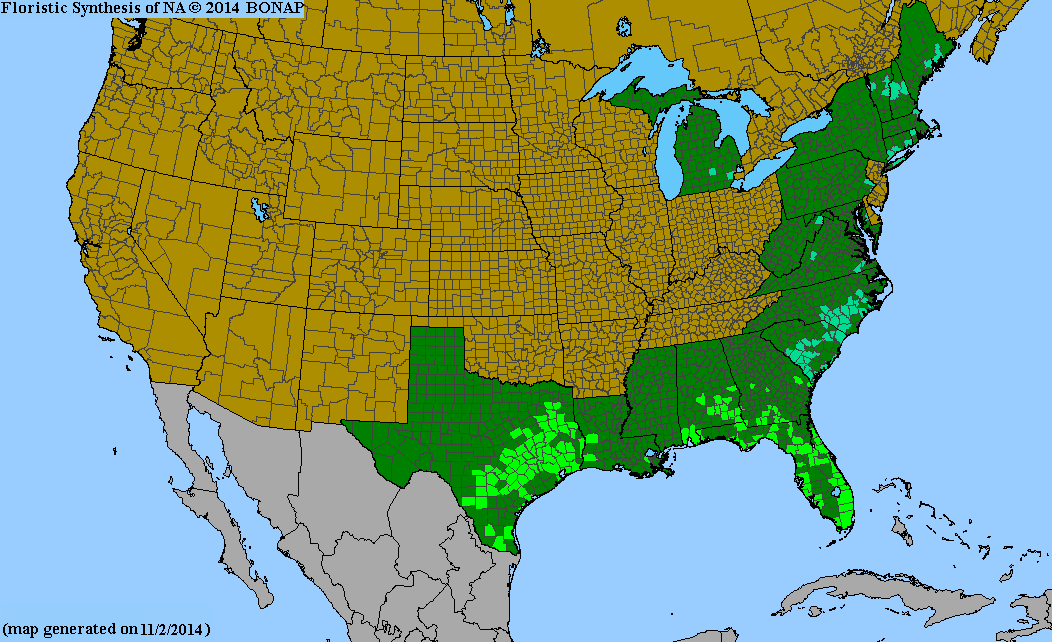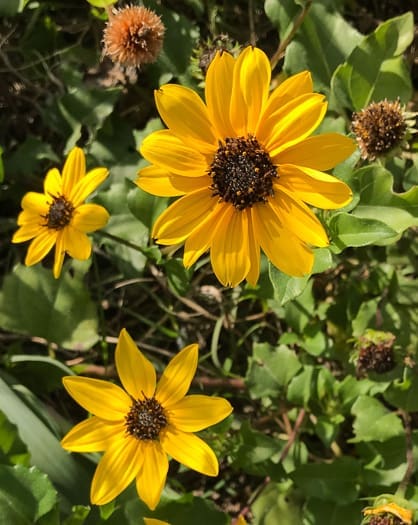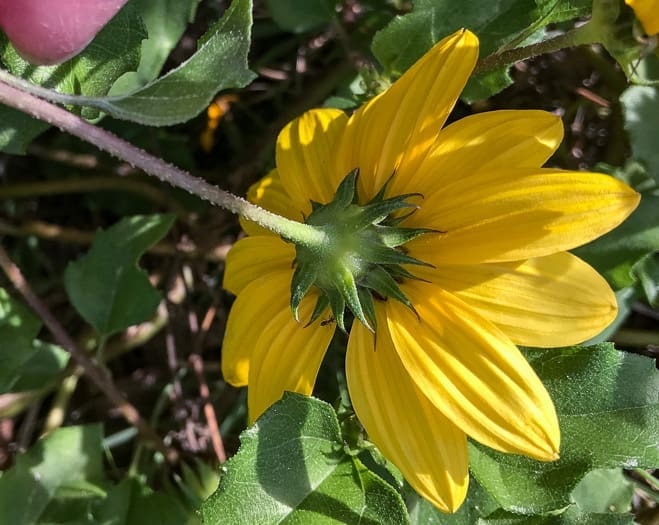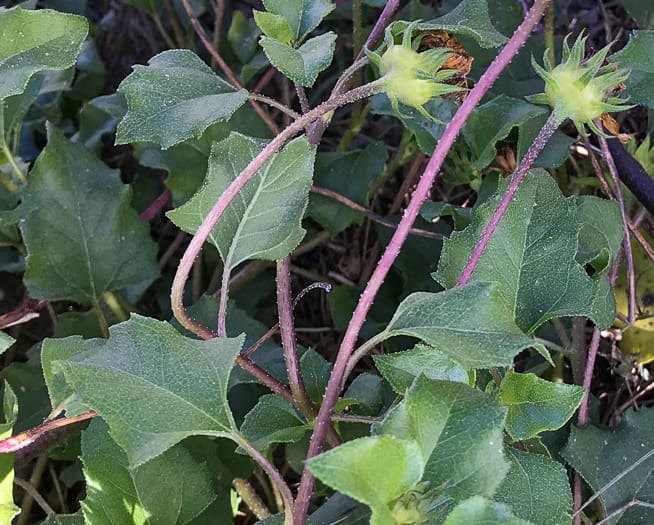Asteraceae
dune sunflower
Helianthus debilis
Synonyms
Helianthus annuus var. debilis
Other Common Names
beach sunflower, cucumber-leaf sunflower
Plant Type
Herbaceous Wildflower
Life Cycle
Annual
Typical Size
1-2 ft. tall
2-4 ft. wide
Tolerant of
Drought, Salt Exposure
Inolerant of
Poorly Drained Soil
Propagation
By seed
Plant Propagation Notes
Easily grown from seed and readily self seeds.
Plant Planting Notes
Self-seeding can be aggressive in optimal growing conditions.
Wildlife Benefits
Nectar/pollen source for pollinating insects, Fruit/seeds for birds
Leaves
Leaves mostly cauline and alternate. Leaf blades delate-ovate with subentire to serrate margins.
Flowers
Flower heads made up of 11-20 bright yellow ray and 30+ reddish disc flowers with dark anthers.
Fruit
Cypselae glabrous or sparsely hairy.
Bark
Stems decumbent, sometimes red/brown mottled.
Toxicity
No known toxicity.

USDA Hardiness Zones
8, 9, 10
Light Exposure
Full Sun
Soil Moisture
Dry, Medium
Soil Drainage
Well-drained
Soil pH
Acidic (less than 6.0), Neutral (6.0-8.0)
Native in South Carolina?
No
Closest States Where Native
GA
Plant Native Habitat
Dunes and disturbed areas throughout coastal areas.
Global Conservation Status (NatureServe)
Secure (G5)
Federal Conservation Status (USFWS)
Not Listed
Distribution Notes
Native in coastal Georgia; naturalized in coastal South Carolina
Subspecies
Helianthus debilis subsp. cucumerifolius
Helianthus debilis subsp. debilis
Helianthus debilis subsp. silvestris
Helianthus debilis subsp. tardiflorus
Helianthus debilis subsp. vestitus



